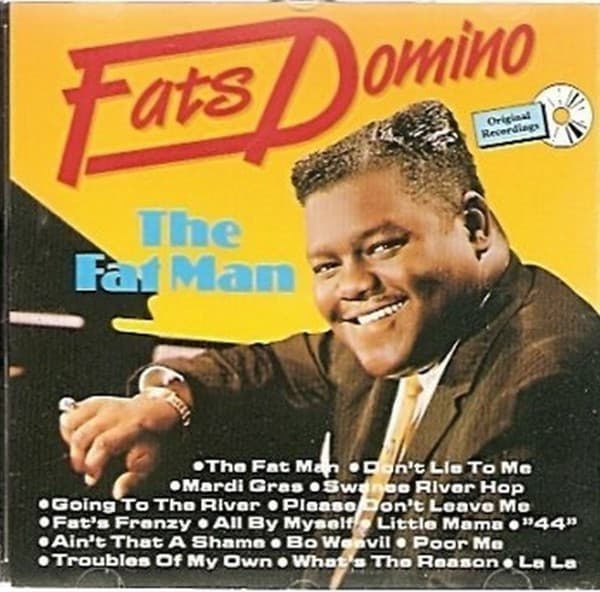
Fats Domino’s “The Fat Man” is an Early Rock and Roll Anthem that Celebrates Life and Love.
The year was 1949, a time when the world was still finding its footing after the turmoil of war. Radios hummed with the smooth sounds of big bands and crooners, but in the back alleys and bustling clubs of New Orleans, something new was brewing. A sound rooted in the blues and boogie-woogie, infused with a vibrant, irresistible rhythm that would soon shake the foundations of popular music. This was the birth of rock and roll, and at its heart was a big man with an even bigger sound: Fats Domino.
On December 10, 1949, Imperial Records released a single that would go down in history: “The Fat Man,” a rollicking, piano-driven track that captured the essence of this burgeoning genre. While it may seem like a simple song on the surface, its impact was anything but. The song, with its infectious beat and joyful, boisterous vocals, was a testament to the power of pure, unadulterated music. It was a call to the dance floor, a celebration of life, and a joyful expression of the human spirit.
“The Fat Man” quickly resonated with audiences, becoming a breakout hit for Fats Domino and Imperial Records. It didn’t just find a spot on the charts; it helped to define a new sound. The song climbed to No. 2 on the Billboard R&B chart in early 1950, a remarkable achievement for a debut single. This success wasn’t just a fluke; it was a clear signal that the public was ready for something different, something with more energy and soul than the mainstream offerings of the time. The chart position wasn’t just a number; it was a sign of a cultural shift, a seismic event in the world of music.
The story behind the song is as charming as its melody. “The Fat Man” was inspired by Fats Domino himself, whose real name was Antoine Domino Jr., a jovial and rotund figure who was already a local legend in New Orleans’ music scene. The lyrics, with their playful declarations of his size and his love for good times and good food, were a self-deprecating and endearing way of introducing himself to the world. It wasn’t about being self-conscious; it was about embracing who he was, and in doing so, he gave a voice to anyone who felt a little different. The song’s cheerful confidence was a welcome antidote to the post-war anxieties of the era. The boogie-woogie piano and the driving rhythm were a clear nod to the lively, celebratory atmosphere of New Orleans, the city that birthed so much of America’s musical heritage.
The song’s structure is a masterclass in simplicity and effectiveness. “The Fat Man” begins with a powerful, unmistakable piano riff that immediately grabs the listener’s attention. The bass line is simple but propulsive, and the saxophone solo, while brief, is a perfect burst of energy. All these elements combined to create a sound that was both familiar and revolutionary. It wasn’t just a song; it was an experience. The lyrics are straightforward, but they tell a story of a man who is comfortable in his own skin, happy with his life, and ready to share his joy with the world.
Looking back now, “The Fat Man” is more than just a song. It’s a time capsule, a snapshot of a moment when music was changing, and a new generation was finding its voice. It’s a nostalgic reminder of a simpler time, when a good beat and a soulful voice were all you needed to forget your troubles. For those who remember hearing it for the first time on a crackling radio, it evokes a sense of youthful exuberance and the thrilling feeling of discovering something new and exciting. It’s the sound of possibility, of a new era dawning, and of a man who, with just his voice and his piano, changed the world forever. It’s the sound of Fats Domino, a true original whose legacy continues to inspire and uplift us all.